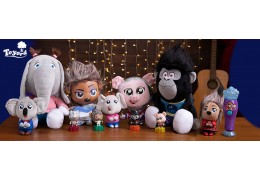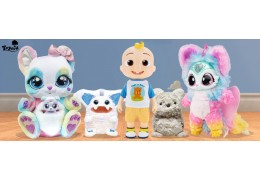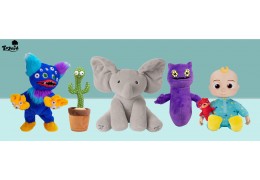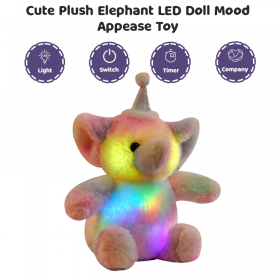Personalized talking dolls and night light projector plush toys are transforming the plush toy industry. By combining...
The Effect of Interactive Plush Toys On Early Children's Language Development
Interactive plush toys are popular with younger children. These tiny and cuddly buddies are so adorable that even grownups can't help but smile when they see them. On the other hand, were you aware that cuddly interactive plush toys may play an important part in fostering a child's growth? The following are some of the methods in which interactive plush toys do so:
Babies Find Comfort In Cuddly Toys Like Custom Stuffed Animals.
A child's anxiousness may be soothed by the presence of custom stuffed animals. An example of something that may help calm a fussy baby is a teether made of wood that has a place to keep a stuffed animal. Even when they are older, children might find solace in their beloved stuffed animal since these items are comforting and familiar to them.
Providing children with a feeling of normality and offering them anchors such as custom stuffed animals and interactive plush toys might help them develop the ability to self-soothe when they are upset. This competency is essential, and it enables children to establish their independence, which is significant, particularly when they confront life events such as getting a new sibling or attending daycare for the first time. Children who are having trouble getting accustomed to consoling themselves on their own might benefit from practising by cuddling with an interactive plush animal.

Children's Interactive Plush Toys Aid In The Development Of Their Social Skills.
Children often begin to acquire their foundational social skills between the ages of 12 and 18 months. They are encouraged to acquire these abilities by custom stuffed animals, and custom stuffed animals and dolls help children emulate activities that they encounter in normal life. For instance, they may pretend to provide food to a doll or that a toy elephant is imitating the action of sipping from a bottle. Even though it seems to be play, children are encouraged to use their imaginations and place themselves in the position of their toys, which is a vital element of developing empathy.
They are better able to make the transition into pretend play with other children, which is the next stage in a child's social development, after they have practised their roles with custom stuffed animals. They are able to develop the self-assurance necessary to converse with other individuals as a result of interactions such as these.

Fluency May Be Increased By Playing With Interactive Plush Toys.
Children are more likely to improve their speaking and language skills when they engage in pretend play. When a youngster plays out a drama, he will often go through the several events that he is acting out. It doesn't matter whether his favourite interactive plush toy is a bunny stuffed animal or a lion ; acting out a tale with toys is a great approach to develop communication skills since it allows him to be creative. Playing with interactive plush toy helps young children improve their language skills as well. For instance, if you answer to a babbling newborn via a interactive plush toy while the baby is babbling, the baby will "speak" back to the interactive plush toy. They learn how to properly take turns as a result of this engagement.
Children Who Play With Custom Stuffed Animals Are More Likely To Develop Empathy As Adults.
A child's urge to connect with people and care for them is nourished when they tend to their interactive plush toys. Toys provide children with a tangible and external reference point, which enables them to learn how to appreciate their interactions with the people and animals in their environment while they are playing with their interactive plush toys.
When a youngster plays pretend, particularly when they take care of a stuffed animal, they receive the opportunity to develop the desire to be nurturing toward other people. Toys may assist children of any age, even those in elementary school, with putting their emotions into context and determining the most appropriate response to a given circumstance. For instance, students in a classroom of seven-year-olds can learn how to interact with a new student if the teacher play-acts the situation with custom stuffed animals and then asks the students what they should do given certain scenarios. This can be accomplished by asking the students what they should do given the situation and then having the students respond with their suggestions.
Conclusion
To an adult, an interactive plush toy may seem to be nothing more than a toy, but to a youngster, it represents so much more than that. A kid's interactive plush toy, in addition to being a friend for the child, assists the child in developing into a well-adjusted adult by assisting the child in making sense of the world around him. Children will benefit from interactive plush toys and the development of social skills that will serve them well in later years if they are given opportunities to play with soft toys.
Reprint statement of blog content: All the blog content and image are original, copyrighted by gameplushtoy.com. The reprint statement must be included with our permission. Toyard is not responsible for reprinting for similar content or containing trademark and other infringement reprint statements. Please contact us if there is infringement content.



















Top authors